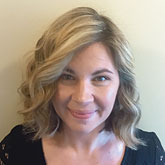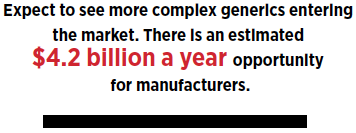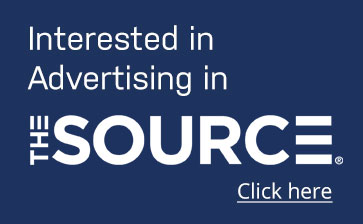The market of complex generics remains untapped, while their power for savings is significant
Complex generics, a drug category that often flies under the radar, have the potential to save a health system hundreds of thousands of dollars a year.


“Typical generic drugs are fairly simple to make: You get the chemical compound right, and you can produce the product,” says HealthTrust’s Mark Walsh, PharmD, Corporate Head of Pharmacy Sourcing. But unlike a regular generic, which can obtain approval from the Food and Drug Administration (FDA) simply by going through the Abbreviated New Drug Application (ANDA) process and proving it’s identical to the branded counterpart, complex generics live up to their name with significant manufacturing and regulatory challenges—making them less prevalent.
What are complex generics?
Complex generics are defined by the FDA as “a generic that could have a complex active ingredient, complex formulation, complex route of delivery or complex drug- device combinations.” These include enoxaparin, low molecular weight heparin (LMWH), abuse-deterrent generics, parenteral microspheres, topical ointments and those with complex drug-device combinations, such as nasal sprays and transdermal delivery systems.
Why the push for more?
Once several simple generics enter the market, the price can plummet up to 97%, says Walsh. But because there are fewer—often only one—complex generics in a class, the price differential from the branded drug is typically only between 15% and 20%. That’s why the FDA is promulgating policies designed to increase the number of complex generics on the market, including more guidance to address regulatory and scientific challenges.
How have they worked?

Rachael Lu, PharmD, BCPS, Formulary Manager at Trinity Health in Livonia, Michigan, has seen firsthand how the savings can add up. She points to enoxaparin (Lovenox)—an anticoagulant—which used to cost up to $30 a day when the branded version was the only one on the market. The complex generic now available, which provides equivalent safety and efficacy, costs about $7 a day, she says. Given the volume of enoxaparin the health system uses, the result is significant. “Decreasing our spend by two-thirds is profound,” she says. “The use of complex generics is another tool we can use to arrive at value-based care for our patients.”
Formulary decisions around complex generics depend on the drug itself, Lu explains. “I don’t think with this type of drug we can have a one-size-fits-all.” Instead, the hospital takes a diverse approach rather than automatically requiring a therapeutic substitution as it does with regular generics.
The agent and how it’s used determine the pathway to formulary placement. Sometimes, she says, approval of a complex generic will drive the Pharmacy and Therapeutics (P&T) Committee to reevaluate the entire class of drugs to see if there is an opportunity to transition more patients to the complex generic version.
What’s in store?
To help its members integrate complex generics into their pharmacies, HealthTrust monitors the market, says Walsh, including patent expirations and litigation, to estimate when the product might be available; takes products through its pharmacy, clinical and operational boards to ensure they will work in various healthcare settings; produces monographs for P&T committees to ease adoption; and serves as subject matter experts to present at conferences and meetings.

Expect to see more complex generics entering the market, adds Walsh, particularly with the FDA push. He recently crunched the numbers and estimated there is a $4.2 billion a year opportunity for manufacturers. “That’s a huge untapped market,” he says.
Share Email Generics, Q1 2020





